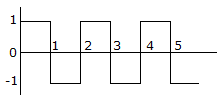Chemical Engineering :: Process Control and Instrumentation
-
Change of angle of refraction with composition comprises the working principle of a
-
Which of the following instruments is not used for measuring sub-zero (<0°) temperatures ?
-
Which of the following is not suitable for measuring the temperature of a red hot object in the range of 800 - 1600°C ?
-
Flame photometry is used for the determination of compositional analysis of
-
Reference points i.e., ice point and steam point in Reaumer temperature scale are respectively
-
Which of the following is not a composition measuring instrument ?
-
Emf developed by a thermocouple while measuring a temperature of 800°C is about 31 mV. The type of thermocouple used is
-
Which of the following thermocouples is incapable of measuring sub-zero (i.e., < 0°C) temperature ?
-
Platinum resistance thermometer is the international standard for temperature measurement between


 Whatsapp
Whatsapp
 Facebook
Facebook






